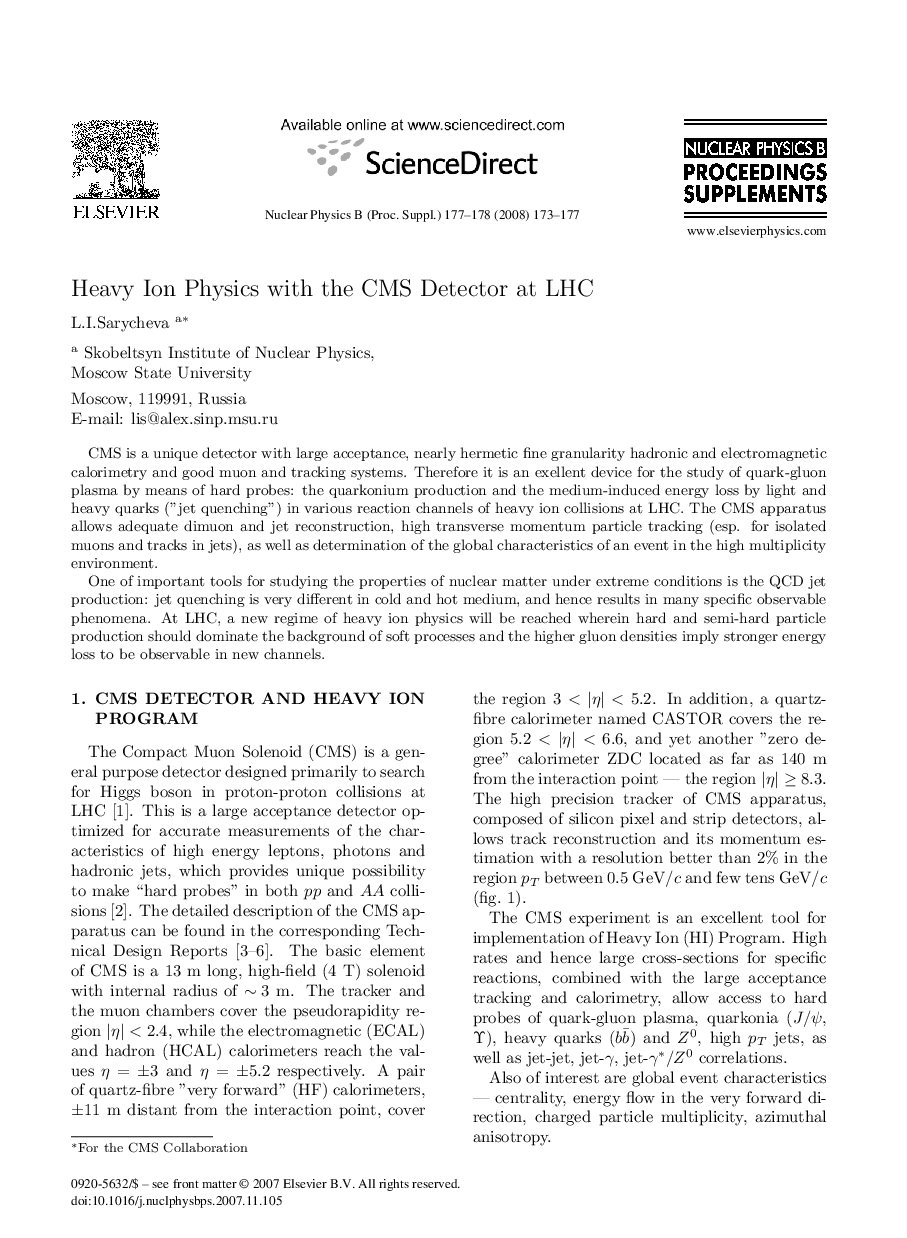| Article ID | Journal | Published Year | Pages | File Type |
|---|---|---|---|---|
| 1846894 | Nuclear Physics B - Proceedings Supplements | 2008 | 5 Pages |
CMS is a unique detector with large acceptance, nearly hermetic fine granularity hadronic and electromagnetic calorimetry and good muon and tracking systems. Therefore it is an exellent device for the study of quark-gluon plasma by means of hard probes: the quarkonium production and the medium-induced energy loss by light and heavy quarks (“jet quenching”) in various reaction channels of heavy ion collisions at LHC. The CMS apparatus allows adequate dimuon and jet reconstruction, high transverse momentum particle tracking (esp. for isolated muons and tracks in jets), as well as determination of the global characteristics of an event in the high multiplicity environment.One of important tools for studying the properties of nuclear matter under extreme conditions is the QCD jet production: jet quenching is very different in cold and hot medium, and hence results in many specific observable phenomena. At LHC, a new regime of heavy ion physics will be reached wherein hard and semi-hard particle production should dominate the background of soft processes and the higher gluon densities imply stronger energy loss to be observable in new channels.
